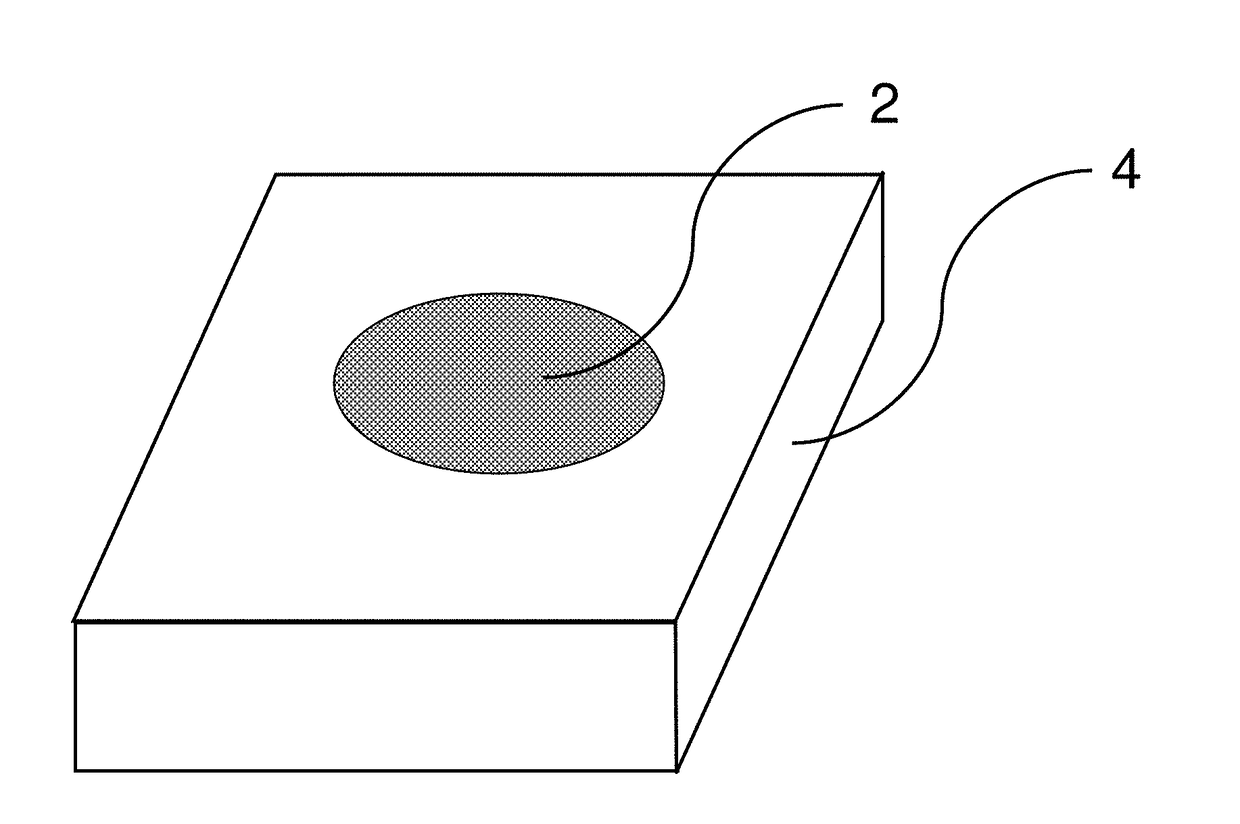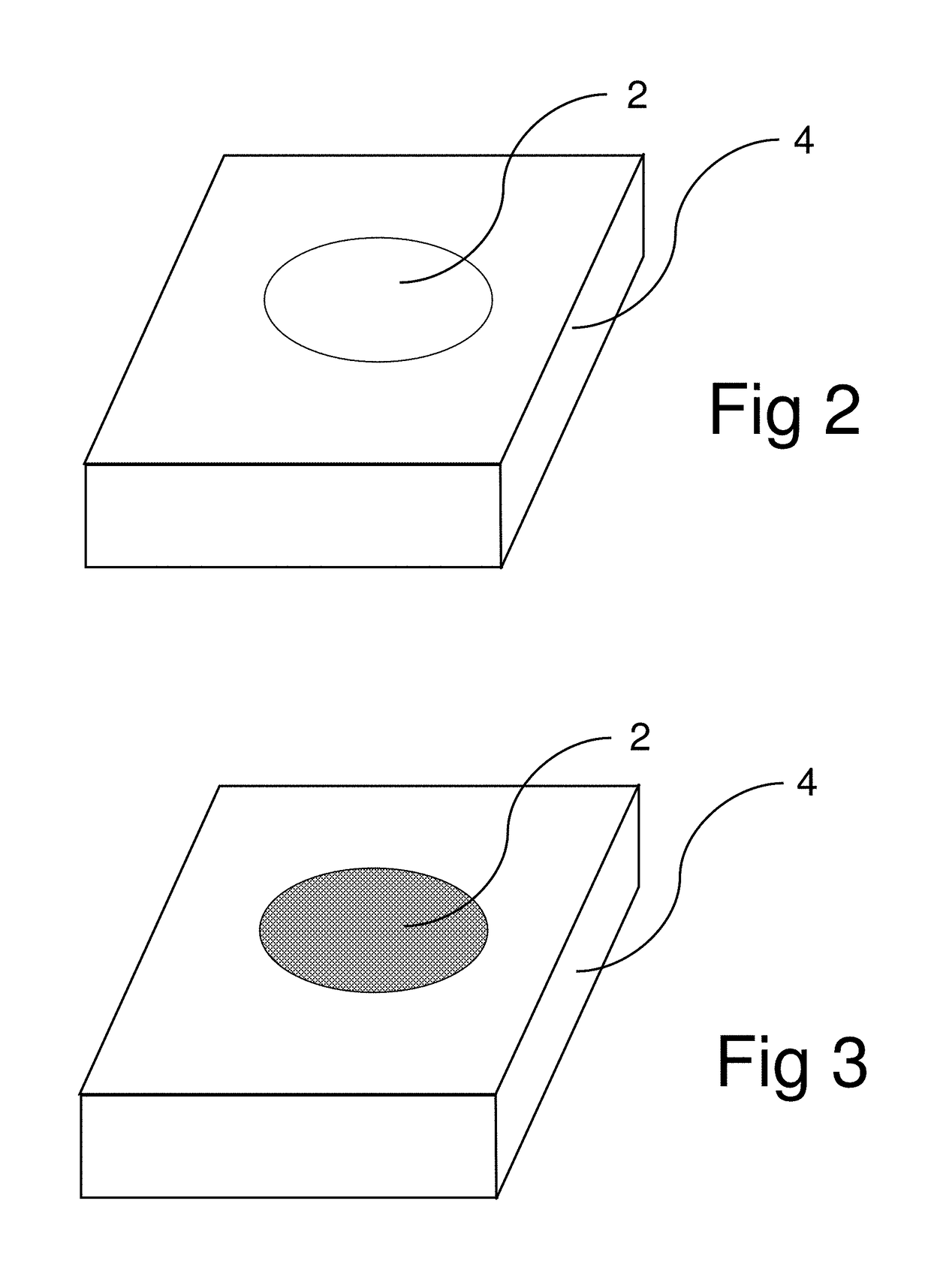Beta-phase indicator
a technology of beta-phase indicators and aluminummagnesium alloys, applied in the direction of chemical indicators, material testing goods, and investigating ph values, can solve the problems of affecting the color of the surface of the alloy, the tendency of the ph to dissolve in low and neutral ph environments, and the intergranular corrosion. to achieve the effect of more rapid color chang
- Summary
- Abstract
- Description
- Claims
- Application Information
AI Technical Summary
Benefits of technology
Problems solved by technology
Method used
Image
Examples
first embodiment
[0030]In the test, the material to be tested, either a sample coupon 4 such as shown in FIG. 2, or a specific portion of a larger structure such as ship bulkhead 6 shown in FIG. 4 is cleaned to bare metal. A light abrasion may be necessary to perform this cleaning step. The indicating chemical is then placed onto sample coupon 4 or sprayed on the specific area 10 being tested on bulkhead 6. For a vertical bulkhead such as 6 in FIG. 4, it may be necessary to mix the indicating chemical with a thickening agent as described supra in § [0021]. The reaction is allowed to continue for a pre-determined amount of time and any changes in the color of the indicating chemical are observed. A color comparison chart is utilized which has several color swatches therein to indicate what the color of the indicating chemical is at the start of the test and what color it is at the end of the test if the material being tested is sensitized. To generate the color comparison chart, the test is run on a ...
second embodiment
[0031]In the test, the material to be tested, either a sample coupon 4 such as shown in FIG. 2, or a specific portion of a larger structure such as ship bulkhead 6 shown in FIG. 4 is cleaned to bare metal. The temperature of coupon 4 or area 10 is measured. The indicating chemical is then placed onto sample coupon 4 or sprayed on the specific area 10 being tested on bulkhead 6. To generate the color comparison chart used for this embodiment, the test is run on a sample coupon which is highly sensitized, for example, sensitized to correspond to an ASTM G67 standard of 60 mg / cm2. The test is repeated for several different temperatures corresponding to those expected for materials in the field which are to be tested. The elapsed time for this test for each selected temperature is plotted against the observed color changes in the indicating chemical. The various colors that the indicating chemical turns at various amounts of elapsed time can then be placed on the color comparison chart ...
third embodiment
[0032]In the test, the material to be tested, either a sample coupon 4 such as shown in FIG. 2, or a specific portion of a larger structure such as ship bulkhead 6 shown in FIG. 4 is cleaned to bare metal. The temperature of coupon 4 or area 10 is measured. The indicating chemical is then placed onto sample coupon 4 or sprayed on the specific area 10 being tested on bulkhead 6. Based on the measured temperature, the test is allowed to run for a certain amount of time. At the end of this pre-determined time, the final color of the indicating chemical is then used to estimate the DoS.
PUM
| Property | Measurement | Unit |
|---|---|---|
| temperature | aaaaa | aaaaa |
| metallic | aaaaa | aaaaa |
| metallic structure | aaaaa | aaaaa |
Abstract
Description
Claims
Application Information
 Login to View More
Login to View More - R&D
- Intellectual Property
- Life Sciences
- Materials
- Tech Scout
- Unparalleled Data Quality
- Higher Quality Content
- 60% Fewer Hallucinations
Browse by: Latest US Patents, China's latest patents, Technical Efficacy Thesaurus, Application Domain, Technology Topic, Popular Technical Reports.
© 2025 PatSnap. All rights reserved.Legal|Privacy policy|Modern Slavery Act Transparency Statement|Sitemap|About US| Contact US: help@patsnap.com



